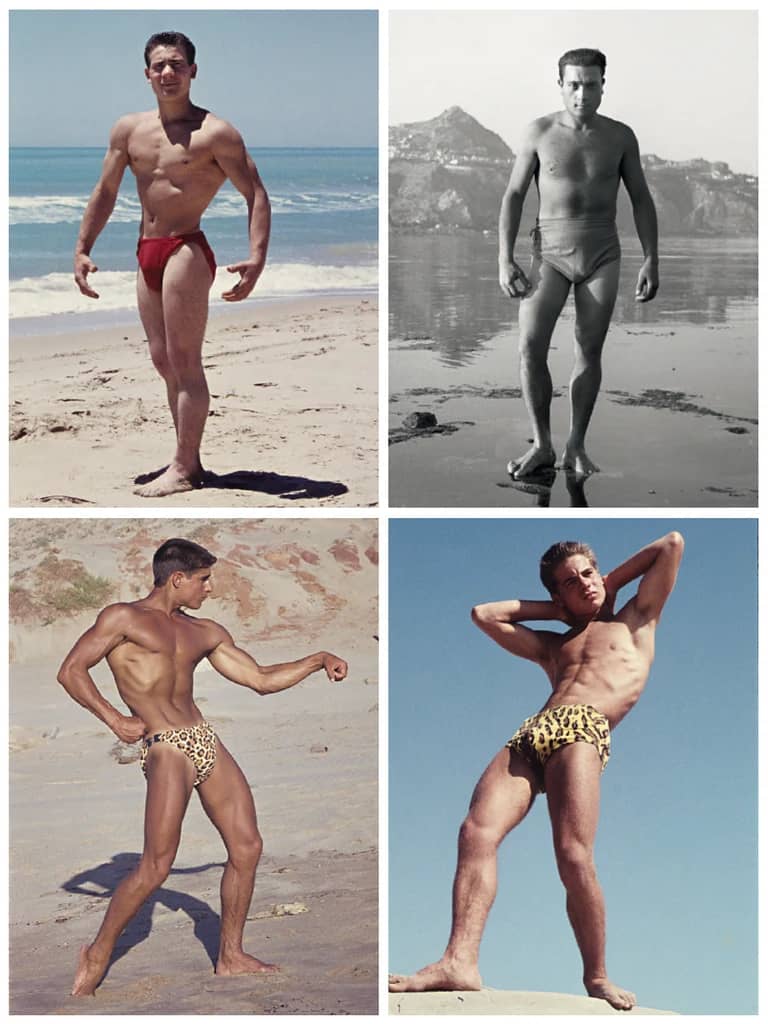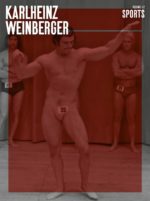1ère édition tirée à 1 000 exemplaires.
Le photographe suisse Karlheinz Weinberger (1921-2006), surtout connu pour ses archives sur les jeunes queers et les jeunes inadaptés, a également fait plusieurs voyages dans la région méditerranéenne de son vivant. Quelques-unes des photos qu’il y a prises sont largement reconnues, mais la plupart n’ont jamais été publiées auparavant.
Son intérêt ne se limite pas aux hommes et à leur physique, car il documente aussi la vie traditionnelle de l’Europe du Sud, dans les villes et les campagnes, aux ports et aux plages, imprégnant souvent ces sujets d’une qualité visuelle.
Les photographies présentées dans ce volume ont un statut particulier dans l’œuvre de Karlheinz Weinberger. À ce jour, Weinberger est surtout connu pour ses photographies du Halbstarke et des Rockers, ainsi que pour ses nus. Un autre aspect du travail de Weinberger a déjà été souligné dans le précédent volume sur les sports, présentant des photographies de lutteurs, joueurs de football, gymnastes, et les constructeurs de corps. Ce volume offre une découverte tout aussi passionnante, rassemblant les photographies qu’il a prises lors de plusieurs voyages en Méditerranée. Quelques-unes d’entre elles sont bien connues, comme l’image de l’homme Esso, qui a atteint le statut de culte, mais la plupart n’ont jamais été publiées avant la parution de ce livre.
De nombreuses photos ont été prises dans et autour d’Agrigento (Palma di Montechiaro, San Leone). Au fil des ans, Weinberger élargit ses voyages pour inclure les îles Lipari et Lampedusa, Lecce et Naples. Il se rend deux fois de l’autre côté du bassin méditerranéen : à Tanger en 1963 et 1964.
Cependant, son intérêt ne se limitait pas aux hommes et à leur physique. Il documente également la vie traditionnelle du Sud, dans les villes et à la campagne, dans les ports et les plages, imprégnant souvent ces sujets d’une qualité filmique qui rappelle La Terra Trema de Visconti (1948) et Accattone de Pasolini (1961) ; avec un texte de Raphael Tandler, photos en n.b. et en couleurs.
1st edition limited to 1000 copies.
The Swiss photographer Karlheinz Weinberger (1921–2006), best known for his edgy archive of queer youth and teenage misfits, also made several trips to the Mediterranean region in his lifetime. A few of the photos he took there are widely recognised, but most have never before been published. Many were shot in and around Agrigento, as well as the Lipari Islands, Lampedusa, Lecce, and Naples. He also visited Tangier in 1963 and 1964. His interest was not limited to men and their physiques, however, as he also documented the traditional life of Southern Europe, in the cities and the countryside, at the ports and the beaches, often imbuing these subjects with a filmic quality.
The photographs presented in this volume carry a special status in the extensive oeuvre of Karlheinz Weinberger. To this day, Weinberger is best known for his photographs of the Halbstarke and of Rockers, as well as for his nudes. A different aspect of Weinberger’s work was already highlighted in the previous volume on Sports, showcasing photographs of wrestlers, football players, gymnasts, and body builders. This volume offers just as exciting a discovery, assembling the photographs that he took on several trips to the Mediterranean. A few of them are well known–such as the picture of the Esso man, which has reached cult status–but most have never been published before the release of this book.
Many of the photographs shown were shot in and around Agrigento (Palma di Montechiaro, San Leone). Over the years, Weinberger expanded his travels to include the Lipari Islands and Lampedusa, Lecce and Naples. Twice he visited the other side of the Mediterranean Basin: he went to Tangier in 1963 and 1964.
His interest was not limited to men and their physiques, however. He also documented the traditional life of the South, in the cities and the country-side, at the ports and the beaches, often imbuing these subjects with a filmic quality reminiscent of Visconti’s La Terra Trema (1948) and Pasolini’s Accattone (1961) ; with a text by Raphael Tandler.














